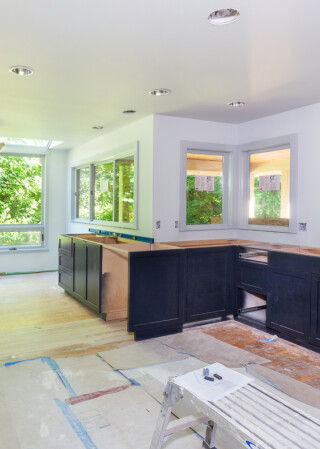
Navigating GST in Home Purchases: The Uncertainty of “Substantial Renovations”
Author: Molly Corney
In Australia, homebuyers generally do not pay Goods and Services Tax (GST) on a home unless it is a new property that has not been sold before as a residential home. However, if a home has undergone "substantial renovation", the sale may be subject to GST, adding 10% to the purchase price. The challenge is that what constitutes a "substantial renovation" which remains unclear.
As housing becomes less affordable, with rising prices, rents, and debt costs, saving for a home deposit takes longer. Consequently, fewer homeowners cannot afford to move, leading many to renovate instead. Landlords also frequently renovate to benefit from higher rents.
Most existing home purchases do not attract GST however, GST applies to newly built homes and to substantially renovated ones. GST is levied on the value of consumption, typically assumed to be the market value. When a "new home" is first bought, it's presumed the purchase price equals the present value of all future consumption of the home, meaning future buyers usually do not pay GST. However, if a home undergoes substantial renovation, it's assumed most of the original value has been consumed, and the renovation adds enough value to consider the home "new," making it subject to GST.
The term “substantial renovations” is defined in section 195-1 of the GST Act as renovations in which all, or substantially all, of a building is removed or replaced. However, the renovations need not involve removal or replacement of foundations, external walls, interior supporting walls, floors, roof or staircases to be classified as a “substantial renovation”.
The Goods and Services Tax Ruling GSTR 2003/3 offers guidance on when substantial renovations apply. According to this ruling, renovations are classified as "substantial" if they impact the entire building or involve the removal or replacement of all or most of the building's structure. This suggests that structural work requiring building approval, such as moving doors or walls, is likely to be considered substantial renovations.
On the other hand, minor repairs or cosmetic renovations do not add significant value and typically will not trigger GST. Cosmetic renovations are generally aesthetic and less costly than structural renovations. Examples include painting, patching minor wall cracks, adding new carpet, replacing door handles, installing a letterbox, or changing light fittings. Cosmetic renovations are an effective way to enhance a property without the higher costs associated with substantial renovations, but it's crucial to understand the distinction between the two.
The application of GST on home purchases in Australia hinges on whether a property is newly built or has undergone "substantial renovations," a term that remains somewhat ambiguous despite guidance from the GST Act and ATO rulings. As housing affordability continues to decline, many homeowners and landlords opt for renovations over moving, making it increasingly important to understand when these renovations might trigger GST. While substantial renovations can significantly enhance a property's value and potentially subject it to GST, minor cosmetic upgrades typically do not. Buyers and sellers of renovated houses must be aware of these distinctions to avoid unexpected costs and ensure compliance with GST regulations.
Should you have any further questions in relation to the above, please contact our office to discuss with one of our Property Law experts on (02) 4626 5077.
The contents of this publication are for reference purposes only. This publication does not constitute legal advice and should not be relied upon as legal advice. Specific legal advice should always be sought separately before taking any action based on this publication.
Want to hear more from us?
Subscribe to our mailing list

